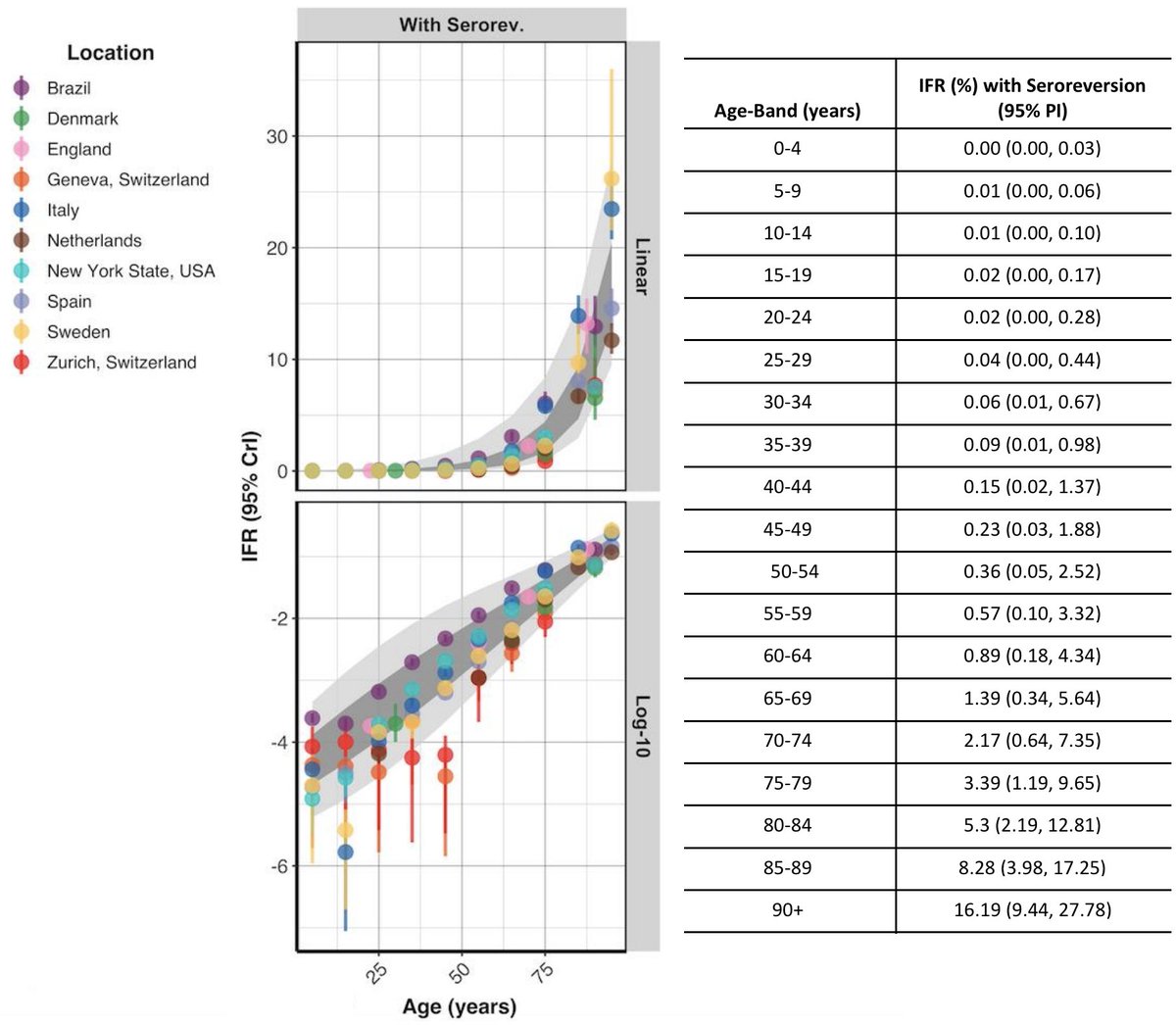The US reported over 3000 deaths from #COVID19 today and the 7-day average of deaths has hit a record with today's average of 2276. Here, I dig into these grim mortality numbers and look at deaths across ages and across weeks in the epidemic. 1/14 https://twitter.com/COVID19Tracking/status/1336837356343607297
I'm using data from @CDCgov ( https://www.cdc.gov/nchs/nvss/vsrr/covid_weekly/) that records weekly deaths involving COVID-19 as well as deaths from all causes. These data use actual date of death but there is a reporting lag. 2/14
CDC reports 261k deaths involving COVID-19 in this dataset. Over half of these deaths are in individuals 75 or older and over three quarters are in individuals 65 or older. 3/14
If we look over time we see the following where COVID-19 associated deaths are shown as colored interval on top of the background of all cause mortality in gray. This is not a stacked plot and so the notable bump in all cause mortality in April is attributable to COVID-19. 4/14
You can see from this that COVID-19 associated deaths are a decent fraction of all cause mortality for individuals over ~35 years. It's also quite obvious that deaths in the past 4 weeks are not fully reported (hence the gray intervals that dive towards zero at the present). 5/14
Still, the increased rate of deaths from the 3rd wave is visible as rising COVID-19 deaths in mid-November. With continued high levels of circulation I fully expect this bump to continual to climb. 6/14
If we look from March to today, we see that COVID-19 associated deaths are ~3.5% of all cause mortality in 25-34 year olds and 9 to 11% of all cause mortality in individuals over 45. 7/14
By using age-specific mortality alongside estimates of total infections across age groups from seroprevalence, researchers have estimated the age-specific infection fatality ratio (IFR). 9/14
@nfbrazeau, @lucy_okell and colleagues estimate age-specific IFR ranging from 0.02% in 15-24 year olds to 16% in individuals over 90. Remarkably, IFR against age appears linear on a log scale suggesting risk of death grows exponentially with age. http://www.imperial.ac.uk/mrc-global-infectious-disease-analysis/covid-19/report-34-ifr/ 10/14
Similarly, @zorinaq compiles age-specific IFR from a number of studies and arrives at similar findings with broad agreement in age-specific IFR estimates. These estimates place COVID-19 IFR at 10-15X that of seasonal influenza in older age groups. https://github.com/mbevand/covid19-age-stratified-ifr 11/14
One perhaps helpful framing for thinking about these numbers is the difference between absolute and relative risk of death. For example, in the 35-44 year old cohort IFR is estimated to be ~0.12%. However, overall yearly death rate for this cohort without COVID is ~0.24%. 12/14
Thus, getting COVID as a 35-44 year old roughly increases yearly risk of death by 1.5X. So, small in absolute terms, but sizable in relative terms. Using above IFR estimates from @mrc_outbreak gives the following distribution of increased yearly risk of death across ages. 13/14
And if I use a similar approach to roughly estimate increased risk of death across cohorts by assuming 15% of the US has been infected as of Nov 15 ( https://covid19-projections.com/ ) and using above mortality figures, I arrive at the following quite similar estimates. 14/14

 Read on Twitter
Read on Twitter









